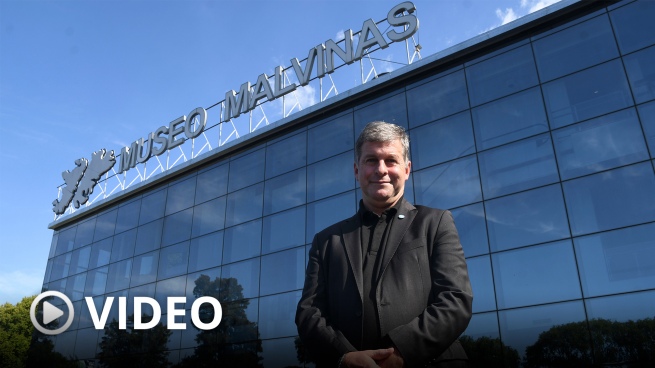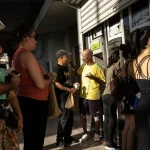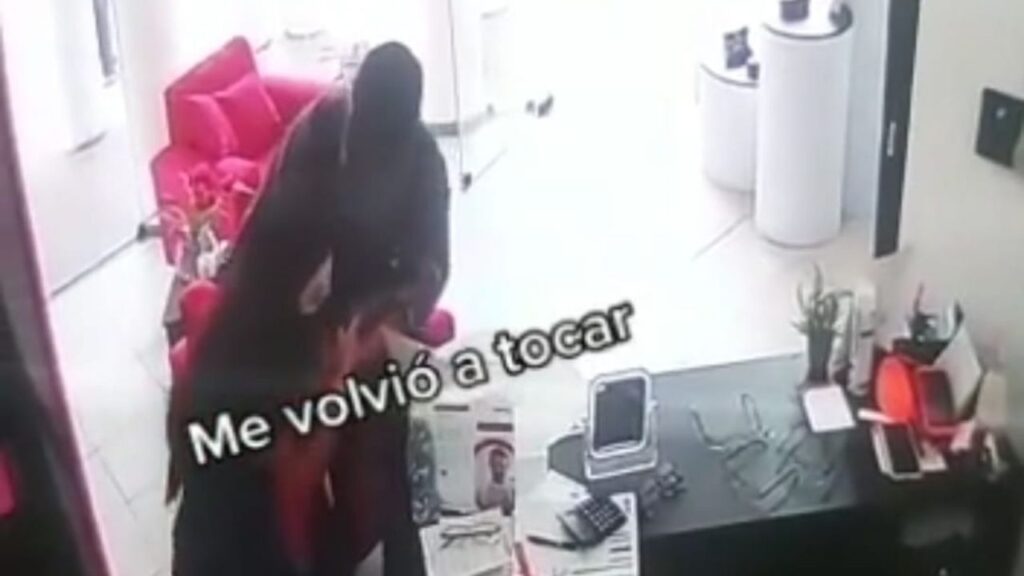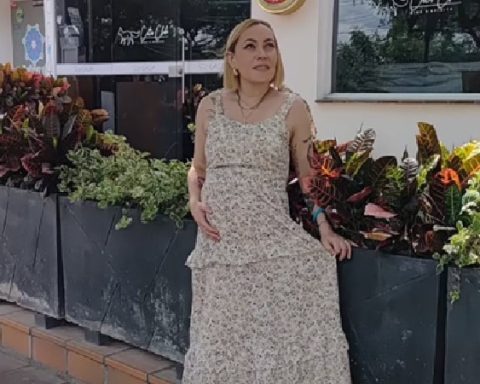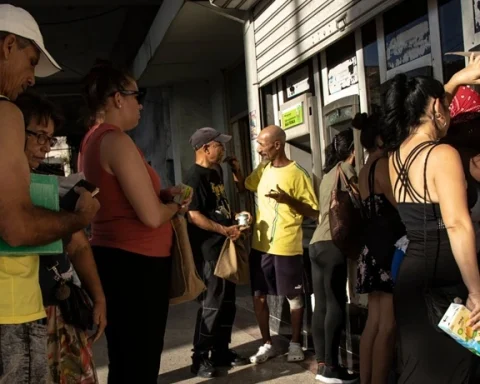Edgardo Esteban, director of the Malvinas and South Atlantic Islands Museum, highlighted the Museum’s role in memory and sovereignty claims.
WATCH VIDEO
“We owe the transition to democracy to the Mothers, Grandmothers and ex-combatants,” says Edgardo Esteban, director of the Malvinas and South Atlantic Islands Museum, which since 2014 has been located in the former ESMA, where the largest clandestine center of detention, torture and assassination of the last Argentine dictatorship: “We share a property with human rights organizations, we are part of that history,” he stresses, referring to “the need to build memory and sovereignty” from the museum he directs, promoted this year for the 40th anniversary of the war.
“It seems like a distant war, but when the squid preys on us and takes more than 187,000 million dollars, from 1983 to last year, the Malvinas is a present and a future too, it has to be a matter of Statethe construction of a belonging, because it is also an economic reality for example”, indicates Esteban.
The museum is preparing an event for April 2 in which León Gieco will participatethe sample of augmented reality “Look at the Falklands”, that will allow you to tour the islands and learn about their history, and a mural that can already be seen of Maradona from ’86, that of the “hand of God”.
“If we focus only on the war, we lose the axis of many things,” the official warns. There were flags, there was a passport that allowed the inhabitants of the islands to enter the continent completely naturally and without other documentation on LADE flights, the only flights there were, the mail was Correo Argentino, the gas was Gas del Estado. There is a world to tell and to understand to continue framing the construction of sovereignty”.
To his understanding, “Malvinas has to be a rescue of the collective, we have to work in the long term, from the State, a fundamental word that is sovereignty, it is not only the mythical, the rhetoric of we are going to return, there is a reality that marks that we have to continue working”.
How? “With school visits to the museum, for example, which can now be visited from Wednesday to Friday from 11 a.m. to 5 p.m. and on weekends until 6 p.m. That is very important, because you cannot talk about what you do not know. Nobody knows who was Vernet, what was Fitzgerald’s plane, what were Los Cóndores. Before the usurpation there were 150 people living on the islands, 23 families, a command, a library, pianos, a whole social life with its cultural activity”.
“There is talk of the 40 years of Malvinas -he says-, but it is 502 years since the first sighting and 189 since the usurpation for example. This is an important anniversary, because it commemorates our fallen comrades who are in the Darwin cemetery and those of us who were there and are now grown up, but what we have as an identity is not enough to work only on the anniversaries, this anniversary has to be a trigger to be able to feel Malvinas and work for future generations”.
This year, Malvinas has to be a reunion with its people, with the neighborhood, the affections, because we did not have a hug when we returned”, maintains the also journalist, writer and ex-combatant, author of “Iluminados por el fuego”, a self-referential book where he recovers the experience of young conscripts taken to fight a war declared by a dictatorship in decline, made into a film in 2005 by Tristán Bauer, today minister of Culture of the Nation.

“I always say -he continues- that when I returned to my house I was greeted by a dog that barked in the dark of the night, a white light and my mother. My mother knew that I was coming back because I called her just on my birthday, the 20 June, from a phone that a cook let me use in Campo de Mayo, where we arrived after spending four days as prisoners of war on the Canberra. But there were many mothers who did not know if their children were alive or dead.
The proposal for April 2 “is to resume the flag of November 20 that was made in 2020National Sovereignty Day, when at the same time throughout the country the 200th anniversary of the first hoisting of the national flag of our Malvinas Islands in 1820 was commemorated – Esteban reviews -: we want the anthem to be sung at the same time, hoist the flag and that in each place the comrades be honored, that they can meet again with their people, that the ex-combatant go to his neighborhood and that they give him that hug that they did not give us when we returned in 1982. May there be a reunion ” .

As well they are working on a book with poems about the islands from 1833, passing through Borges, Yupanqui and Pedroni, to the ex-combatants, and producing a documentary with the province of Chaco and the National University of La Matanza on the ex-combatants of the original peoples, “which will be made in Qom subtitled in Spanish” and “will be released on August 26, the Day of the Veterans of the Original Peoples and of the Gaucho Rivero, because Malvinas is all year round,” says Esteban.
“And next to the Cervantes National Theater and the National Defense University -adds- we are working on a contest of plays about Malvinas and womennot only with those who were in ’82, but for example María la Grande”, a Tehuelche chief from the beginning of the 19th century whose power encompassed practically all of Patagonia.
“With the Malvinas Secretariat we have more than 400 proposals between works, exhibitions and recitals for this year and we will work on a range from the cultural that links Malvinas and cinema, music, theater, literature, sports, art, the gender perspective and the postwar period, with celebrations such as the Sovereign Rights Day, on June 10, because we are also remembering, in this story, the tragedy of the sinking of General Belgrano, which was a war crime,” Esteban concludes.

